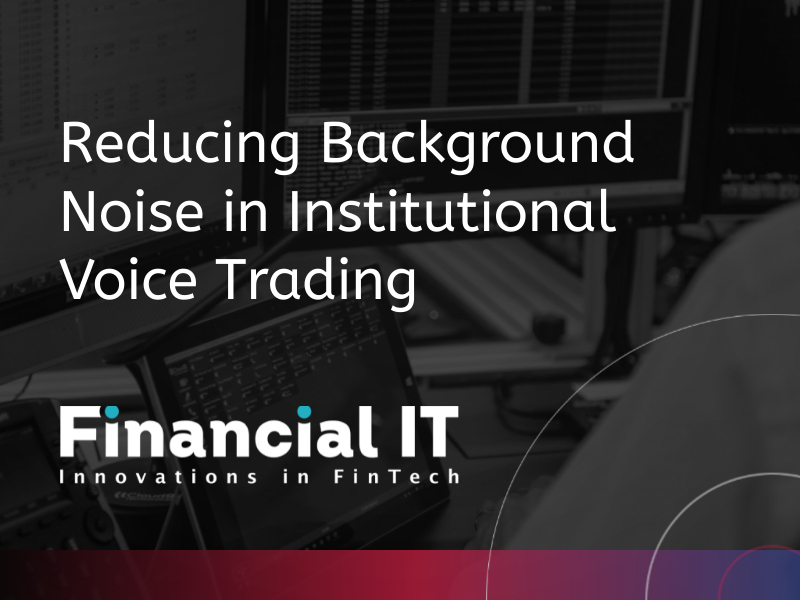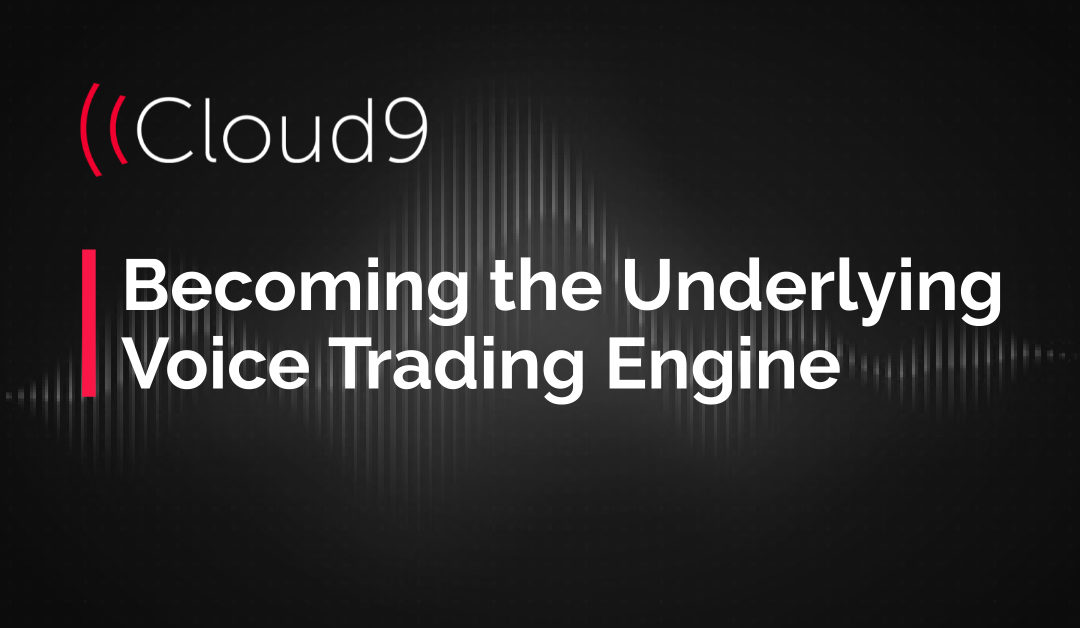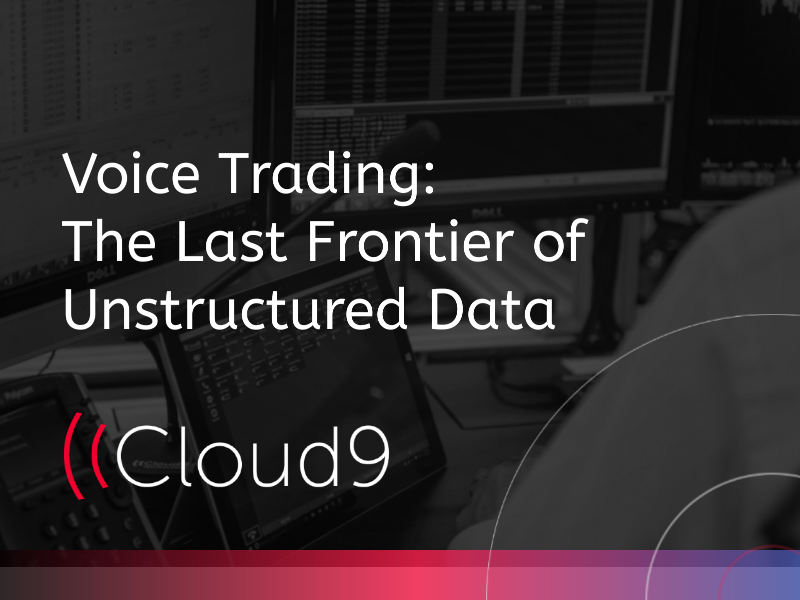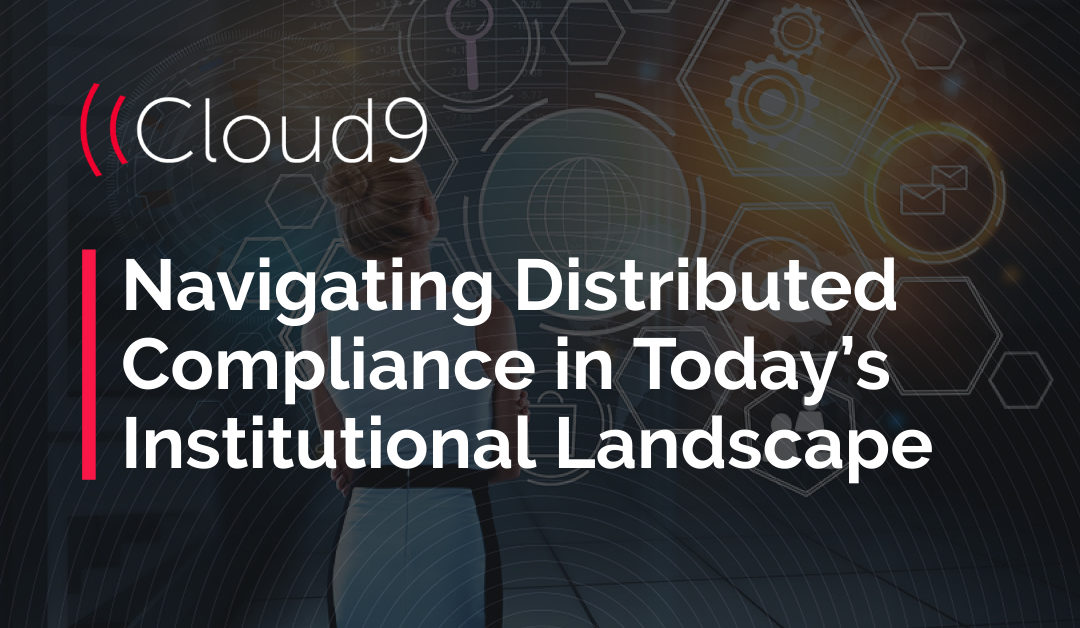
by Andrew Pappas | Nov 12, 2021 | Blog, News, Thought Leadership
Voice trading has been an instrumental part of the institutional trading ecosystem for decades. Even with the advent of electronic trading, voice trading has continued to play an important role in daily trading workflows. But voice trading is not done in a box and background noise has always been part of the equation, especially on the noisy trading floors and broker pits of yesteryear. Now, with the shifting dynamics of traders working remotely, voice trading background noise has taken on a new shape and, as a result, so has the technology used to detect it.
How big of a problem does background noise really play in voice trading? It starts with the quality of the microphones traders use. Whether at home, in an office or on a boisterous trading floor, traders alone cannot control what their microphones can or cannot pick-up.
Historically, phone turrets required traders to be no more than one inch away from the microphone. Not surprisingly, traders hated having to speak from no more than one inch from their microphone in order for their device to capture a clear enough sound. While leaning into the microphone can get old quickly, most traders also don’t like using headsets. Instead, they use a device of their choosing, many of which have become more portable and less cumbersome.
However, with advancements in innovation and mobility come new challenges – in this case, a new assortment of background noises.
Today, microphones are developed so traders can be as much as a foot away. While these newer microphones allow traders to speak from a less intrusive distance, the “critical distance” – the distance at which background speech and noise can be detected – is also expanded. New microphones are addressing a physical issue for traders but creating a new issue for engineers and even compliance teams by picking up more noise around the room.
At the outset of the COVID-19 pandemic last year, all traders were forced into the confines of their homes, creating an entirely new set of background noise that microphones began to detect. Despite the advancements in trader microphones, the technology was not yet capable of removing noises such as babies crying, lawnmowers, or kitchen appliances like dishwashers.
Even though many traders went home to ostensibly silent homes, these subtle but unfamiliar sounds were being detected by today’s noise detection algorithms. Items like laptops and cell phones are changing the way background noise is detected, while even the somewhat trivial clicks of moving a computer mouse, dangling wires or even the placement of a computer can change the way sounds are picked up in the microphone’s path, creating a nightmare for audio engineers.
With recent advancements in Machine Learning, systems can be trained with a set of good and bad case scenarios and gradually learn through speech and voice detection to the point where non-voice sounds can be completely eliminated. In some cases, even small reflective office reverberation can be reduced, improving intelligibility. Trained Machine Learning models that are employed today are exponentially better than voice trading technology that was available twenty years ago. Computing power today is also more readily available, enabling these capabilities to take place without any noticeable impact to audio.
The microphone is not the sole issue. It’s also who is talking on the other side of the line. While there may be minimal background noise on one side, the person on the other side of the conversation may have a multitude of noises that are being captured by their microphone. When you don’t have a good microphone it’s hard to detect background noises such as chairs moving, tapping keyboards, and paper crumpling.
The goal is to reduce that background noise coming in from as much as twenty feet away. Noise reduction algorithms have been developed and are being incorporated into microphones today with optimal accuracy at filtering out unnecessary background noise. Prior algorithms would be tricked by various background noises such as pet sounds, appliances, and any other home-produced complex noises.
Source separation allows algorithms to separate speakers in overlapping conversations taking place simultaneously while discerning what background voices can be weeded out.
While directionality is difficult to detect with a single microphone, modern algorithms and microphone enhancements are able to identify speaker directionality with more than one device – the location from which voices are being captured – and are equipped with much better audio quality, ultimately helping to mitigate background noise issues for engineers and compliance personnel.
Many of the world’s largest CSPs and technology vendors have employed teams of data scientists to develop these capabilities, particularly with the increasing intersection of audio and video. AI and Machine Learning will play a significant role in the advancement of these capabilities, as well as more complex areas such as loudness and tonal balancing, reverberation reduction and immersive audio trading desk experiences.
The next step in advancing these algorithms and microphones even further is adjusting the technology specifically to how the trading floors of today look. While many of these algorithms are being developed individually, some of the voice trading problems are typically much less tolerable to end-users and present immediate challenges. A key element will be securing more source data in order to continue innovating and maintain high-quality results as the environment continues to evolve. Firms that are not already looking into these capabilities will indeed be left behind.
To learn more about how Cloud9 can help reduce background noise in institutional voice trading, contact us today.
————————–
Andrew Pappas is a Chief Architect at Cloud9 Technologies. He joined Cloud9 in 2014 after spending nearly 17 years at IPC Systems as a Senior Software Engineer. He holds a BE in Electrical Engineering and Biomedical Engineering from Farmingdale State College.
This article was originally published by Financial IT.

by Jim Miller | Jun 3, 2021 | Blog, Thought Leadership
Capital markets have undergone a seismic shift in recent years, particularly with the accelerated adoption of technology and cloud-based solutions over the last 15 months. One thing that has not changed, however, is the importance voice trading continues to play in the institutional landscape. And with the increasing levels of sophistication that are enabling individuals on and off the trading floor to communicate with each other – particularly through more advanced APIs – there is now a greater appetite than ever before for cloud-based trading solutions.
The days of solely relying on traditional trading turrets and private wires are dwindling away. Filling that gap are cloud-based, API-driven trading platforms that are driving innovation, enabling firms to streamline workflows, and empowering access to a virtual trading floor that will very soon become the norm across the industry.
In the last year alone, there has been more adoption of cloud than in the ten years prior combined. The pandemic has been a key driver, although this transition was certainly underway prior to last March. When remote working began last March, every firm had to quickly transition to 100% remote – something that cloud-based trading solutions and APIs already enable.
Firms are not only more comfortable with data residing in the cloud but they are now more frequently coming to vendors for help. In fact, leadership at major banks and financial institutions is becoming more outspoken about the need for cloud.
Some customers are generating more than 300,000 voice trading recordings each month. Thanks to advanced APIs and natural language processing (NLP) technology, firms are able to capture the audio of these conversations with 99% accuracy. This not only simplifies the regulatory and compliance process but also delivers more actionable insights that elevate performance.
Two things are becoming very clear. The capabilities for firms to efficiently and securely conduct voice trading in the cloud are there. Firms are becoming far more comfortable using the cloud to access a virtual trading floor and with storing data there.
However, with the growing appetite – and the need – for cloud-based voice trading capabilities, therein lies a growing responsibility for the technology vendors to continue pushing the innovation curve and fuel the voice trading engine.
The Vendor Responsibility
Much like other areas of the institutional ecosystem, the approach to voice trading has shifted for many participants. Today, working from anywhere is a basic necessity and having access to data from anywhere is critical. The key driver in developing technology that can support these changes has and will continue to be listening to customers and addressing their concerns.
API-based platforms are quickly becoming the foundation for the institutional voice trading ecosystem, allowing third parties to access unique voice data and integrate with best-of-breed analytics and surveillance providers. APIs can also ingest rich sources of data that can help analyze and improve the productivity of traders.
About two years ago, remote virtual desktop infrastructure (VDI) began to gain traction and is now enabling more of a hybrid approach for folks who prefer to share time between the trading floors and a remote work environment. Moving forward, support around VDI and ‘work from anywhere’ will become central to everything in institutional trading.
With a greater selection of collaboration tools available and more ways to talk to customers, technology and structural complexities are inevitable. It is up to the vendors to address these hurdles by integrating data with back-office systems and data warehouses.
Becoming the Industry Engine
Voice trading is not a one-size-fits-all. Customers want optionality and the ability to customize workflows. Some have already immersed themselves in the cloud while others still seek a traditional phone turret experience.
With institutional IT teams focusing more on value-add than just on the overall infrastructure, vendors have to provide sufficient management so that IT teams can more easily and seamlessly implement these solutions into their own systems.
The most challenging part is understanding each customer. There are a variety of trader types and with that comes a variety of different workflows. Vendors that are providing voice trading capabilities need to define each of these workflows and have the APIs to support them.
What is most important is that a cloud-based virtual trading setup looks and feels the same for the users. While firms want options around how and where they can operate, they don’t want their teams needing to adapt to different systems depending on where they are on a particular day.
It is no longer about just providing voice capabilities. The focus now needs to be on providing all the voice trading capabilities customers need in a single, intuitive and interoperable platform that’s secure and accessible from anywhere.
Becoming the voice trading engine for the institutional capital markets will be no small task for any technology provider. But enabling anytime, anywhere access, and delivering the ability to digitize data from any conversation simplifies workflows and provides the actionable insights that firms need in our ever-evolving environment.
To learn more about voice trading capabilities and how to navigate the challenges you may be facing in our current environment, please attend our next virtual roundtable that will be co-hosted with EY on Thursday, July 22 at 10am ET. The event will focus on the importance of voice trading data. More information to come but you can secure your spot by emailing cloud9@paragonpr.com.
For more information on Cloud9’s voice trading and cloud solutions, please contact us at sales@c9tec.com.

by Leo Papadopolous | Apr 20, 2021 | Blog, Thought Leadership
One year out from the start of the sweeping COVID-19 pandemic that changed working conditions globally, many firms continue to struggle with how to address the challenges they have faced during the transition, particularly voice trading in what has become a virtual market ecosystem. While every company needs to employ remote working capabilities, there is no question that it is difficult to manage and can create challenges when trying to access and store voice data.
Virtual voice data
There are a number of systems that can capture voice data and many others that can retrieve it, store it, and analyze it. However, there is no single standard defining how institutional voice data needs to be captured. Firms have ample amounts of voice metadata detailing where a conversation began and where it ended, but one of the issues the industry faces is that there is no single agreement on how to represent voice data in a unified way. This has resulted in consumers of that data having to integrate and manage a wide array of unstructured data formats.
As customers became more interested – and in some cases compelled – to capture information from voice communications, it became clear that this issue needed to be addressed.
The FINOS Voice Metadata Standardization working group has taken a number of steps to try to unify the metadata. However, in order for these steps to be enacted and become valuable to users, the standard needs to be adopted across the industry to ensure the process is uniform.
While the simple facet of the equation is capturing and storing voice data in a standard-based method, the more difficult element is transcribing the data and then structuring it so that firms can make more informed trading decisions and leverage it for regulatory purposes.
There are numerous vendors that have expertise in natural language processing (NLP), data structuring, and transcribing data. It will be the responsibility of the producers of such data to make it available via standards-based APIs whereby owners of this data can easily make it available to their vendors.
In the cloud versus on-prem
The next barrier is access to the data. When examining the current situation around structuring data for voice, the lead question must be how comfortable companies will be capturing and storing recordings and metadata in the cloud.
As financial institutions continue to acclimate to longer-term remote work strategies, some are employing permanent work-from-home policies, while others are returning to their offices. Regardless of the approach, the reality is that it will be a hybrid of the two for the foreseeable future. This has resulted in not only an increased appetite for the cloud – but an increased need, particularly in enhancing flexibility and redundancy.
Today, the majority of metadata is captured and stored in on-site facilities. A potentially more effective solution is the use of secure cloud storage. This allows users to access data via APIs making it available to analytics vendors of the customer’s choice and allowing them to leverage the full value of the data.
There are some institutional traders that are generating more than 300,000 recordings per month and are using cloud-based APIs that allow them to perform reconciliation at better than 99.9% accuracy. This provides better accuracy than many on-prem systems. For the first time, customers are approaching vendors for more robust cloud-based voice data solutions as opposed to the other way around. These software-based voice trading systems also provide the compliance features necessary to allow proper trading oversight regardless of work environment.
A software-based voice trading system that can be used from anywhere has become much more than just a “nice to have” – it is now a basic necessity.
Future of voice data
Historically compliance and surveillance have been managed with on-premise solutions. But with new challenges of remote working and tremendous advances in technology, effective cloud-based UCC and voice trading solutions are emerging. This shift has forced vendors to offer products that work as well in cloud settings as they do in traditional on-prem, while enabling a seamless transition to what will be the new normal.
For the first time, firms are more open and comfortable allowing their data – including voice and communication data and disaster recovery solutions – to reside in the cloud. With users that traditionally work both on and off the trading floor distributed across numerous locations, the cloud has become the easiest place to store and retrieve data.
Voice data will be made more accessible and available as it migrates to the cloud allowing owners of data to grant access to best-of-breed analytics vendors. Compliance vendors will use standardized APIs to access that data to provide compliance and analytics capabilities regardless of the location of the systems that are generating the data.
Finally, if an industry-wide standard for the data format is agreed to, producers and consumers of that data will find it far easier to provide value to their customers.
This article was originally published in Traders Magazine.

by Leo Papadopolous | Mar 8, 2021 | Blog, Thought Leadership
The last year has been a whirlwind for everyone. And while regulators such as the CFTC have offered temporary relief and extensions to certain voice trading and record-keeping rules in the increasingly virtual environment, distributed compliance parameters still remain a pivotal element of the institutional landscape. A distributed workforce is not a new concept in any industry, including capital markets. However, a lot of firms continue to struggle with how to address the challenges they’ve faced in the process, particularly in a shifting market ecosystem. While every company needs to employ remote working capabilities, there’s no question that it is difficult to manage and can create potential compliance challenges.
Shifting to the Cloud
With financial institutions acclimating to a longer-term remote strategy and some even beginning to employ permanent work-from-home policies, there has been not only an increased appetite for the cloud – but an increased need. The cloud has become particularly important in enhancing flexibility and redundancy. For the first time, firms are more open and comfortable allowing their data – including voice and communication data and disaster recovery solutions – to reside in the cloud. With users that traditionally work both on and off the trading floor distributed across numerous locations, the cloud has become the easiest place to store and retrieve data. While compliance vendors have typically offered on-premise solutions, cloud-based support is still in its nascent stages. This has opened the door for compliance providers to offer new and more sophisticated products. Conversely, customers need to be asking whether or not compliance vendors can provide both on-prem and cloud-based support.
Open and Interoperable
At Cloud9, one of our goals has been to establish a community of specialists that collectively addresses the integration, efficiency and mobility challenges that firms have faced in the virtualization of our industry. The key is ensuring that vendors are interoperable to enable efficient workflows and avoid performance issues for customers. The same goes for voice trading APIs, which are becoming increasingly more sophisticated to align with the need for greater flexibility in the institutional trading community. Each company will format their data within APIs a bit differently. As a result, if you’re a compliance vendor for instance, you need to be able to normalize data before it can be used.
Industry-wide Data Standard
This raises the question of whether or not an industry-wide standard for data is necessary. For now, it’s not imperative but as data sets become larger and more complex, this may be something that we see the industry transition to, especially as teams become more dispersed and compliance oversight becomes more challenging. To learn more about distributed compliance and how to navigate these challenges in our shifting landscape, please sign-up for Cloud9 and EY’s Distributed Compliance Virtual Roundtable on April 8. You can secure your spot by emailing cloud9@paragonpr.com. For more information on Cloud9’s voice trading and cloud solutions, please contact us at sales@c9tec.com




